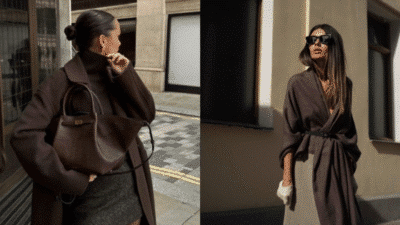The world of fashion has always been a vibrant tapestry woven with threads of innovation, artistry, and vision. From groundbreaking silhouettes to revolutionary textiles, designers have consistently pushed boundaries, interpreting the zeitgeist and shaping how we express ourselves. But what if a new, incredibly powerful thread entered this intricate weave? What if that thread was artificial intelligence, not as a replacement for human genius, but as an electrifying amplifier? Get ready, because AI is not just knocking on the fashion industry’s door; it’s bursting through, redefining creativity, accelerating innovation, and fundamentally transforming the entire ecosystem of fashion design as we know it. This isn’t a futuristic fantasy; it’s our exhilarating present, and the future promises even more astonishing possibilities.
The Dawn of a New Era: AI’s Arrival in Fashion

For centuries, fashion design has been a deeply human endeavor, steeped in intuition, skill, and cultural understanding. Designers would sketch, drape, cut, and sew, translating abstract concepts into tangible garments. The process was often labor-intensive, time-consuming, and reliant on a keen eye for emerging trends, often gleaned through observation, market research, and a healthy dose of instinct.
When AI first entered discussions surrounding creative industries, there was an understandable apprehension. Would algorithms replace artists? Would soulless machines strip away the very essence of human creativity? In fashion, these concerns were particularly potent. How could a computer possibly understand the nuanced emotions behind a runway show, the cultural significance of a particular print, or the intangible allure of a perfectly tailored jacket?
However, as AI technologies have matured, a remarkable truth has emerged: AI isn’t here to replace the designer; it’s here to empower them. It’s a colossal leap forward, akin to the invention of the sewing machine or the rise of digital sketching. AI offers an unparalleled capacity to process vast amounts of data, identify complex patterns, and generate novel ideas at a speed and scale previously unimaginable. This is why AI in creative industries is becoming not just accepted, but eagerly embraced.
At its core, the AI revolution in fashion is powered by several key technologies:
- Machine Learning (ML): Algorithms that learn from data, identifying trends in sales figures, social media posts, or even historical fashion archives to make predictions or generate new concepts.
- Computer Vision: Enables AI to “see” and interpret images and videos, recognizing patterns, styles, and even quality defects in garments.
- Generative AI: The most exciting frontier, where AI creates entirely new content—be it garment designs, patterns, or even virtual models—based on learned data and specified parameters. This includes technologies like Generative Adversarial Networks (GANs), which can produce strikingly original and aesthetically pleasing outputs.
Unleashing Creative Power: How AI Augments Design

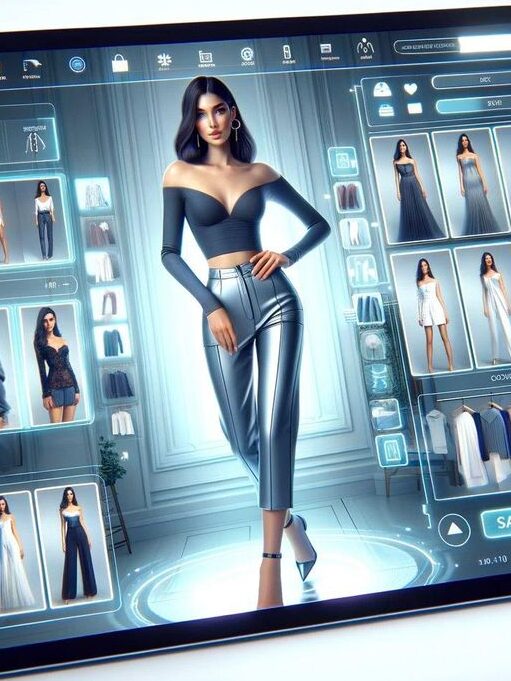
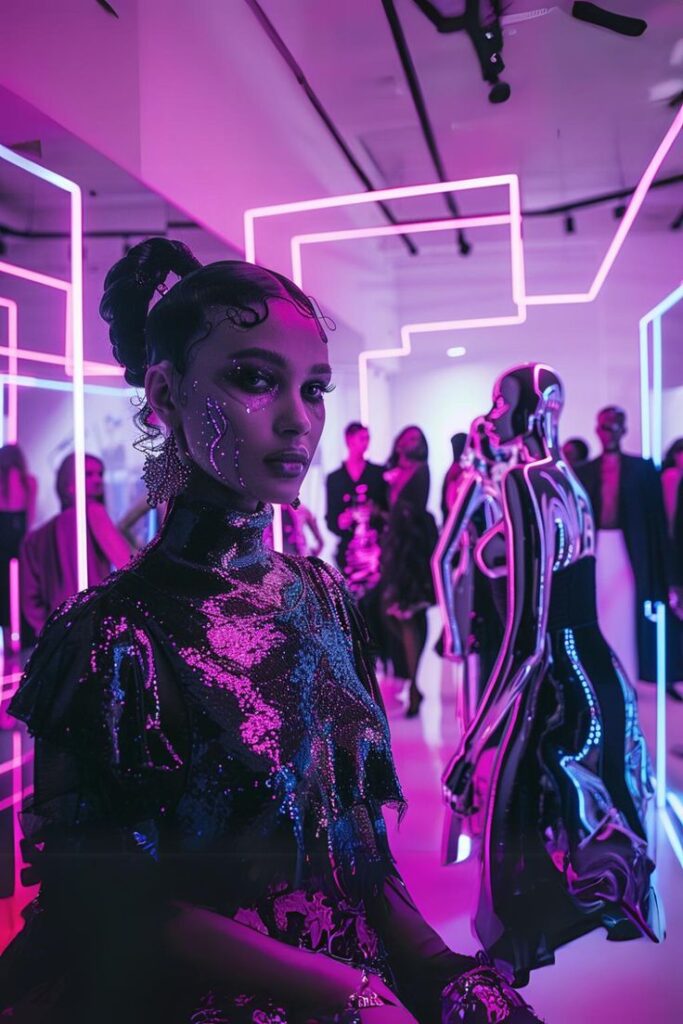
The real magic of AI lies in its ability to augment human creativity, taking on the repetitive or data-heavy tasks, and freeing designers to focus on the truly innovative, emotive, and conceptual aspects of their work.
Trend Forecasting with Unprecedented Accuracy
One of the most crucial and challenging aspects of fashion design is predicting what consumers will want next. Miss a trend, and you risk a warehouse full of unsold inventory. Catch it early, and you could lead the market. Traditionally, this involved extensive market research, competitor analysis, and often, educated guesswork.
AI transforms this process entirely. Algorithms can scour:
- Social media feeds: Analyzing billions of posts, likes, shares, and comments to identify nascent trends in real-time, from micro-influencer styles to emerging subcultures.
- Runway shows and fashion blogs: Identifying recurring themes, silhouettes, and color palettes across global collections.
- Sales data and consumer behavior: Pinpointing shifts in purchasing patterns, popular items, and customer preferences.
- Global news and cultural events: Recognizing how broader societal movements might influence aesthetics and consumer sentiment.
By sifting through this colossal amount of data, AI can predict color palettes, fabric choices, silhouette preferences, and even specific garment features with astonishing accuracy months, or even a year, in advance. For example, brands like Stitch Fix use AI not only to predict what individuals might like but also to forecast broader trends. This predictive power reduces waste from overproduction and ensures that what hits the shelves is what consumers are genuinely looking for.
Accelerating Ideation and Concept Generation
Imagine having an infinite design assistant, capable of generating hundreds of design variations in mere seconds, based on your initial input. That’s precisely what generative AI offers. Designers can input parameters such as mood boards, desired silhouettes, specific fabrics, or even abstract concepts, and the AI will produce a plethora of initial sketches, patterns, and even 3D garment visualizations.
- Generative Adversarial Networks (GANs): These systems consist of two neural networks, a generator and a discriminator, locked in a continuous game. The generator creates new designs (e.g., a dress), and the discriminator tries to determine if it’s a real design or an AI-generated one. This adversarial process forces the generator to produce increasingly realistic and novel outputs. Designers can then fine-tune these AI-generated concepts, injecting their unique artistic vision.
- Text-to-Image AI: Tools like Midjourney, DALL-E, and Stable Diffusion, while not exclusively fashion-focused, allow designers to simply describe a concept (e.g., “a futuristic iridescent gown with flowing fabric and architectural shoulders”) and instantly receive visual representations. This dramatically speeds up the initial brainstorming phase, offering a vast array of starting points.
- Automated Pattern Generation: AI can take a 3D garment design and automatically generate optimized 2D patterns for cutting, saving countless hours of manual pattern-making and reducing fabric waste.
This capability transforms the ideation stage from a linear process into a dynamic, iterative exploration, allowing designers to experiment with concepts that might otherwise be too time-consuming or complex to explore manually.
Personalization at Scale
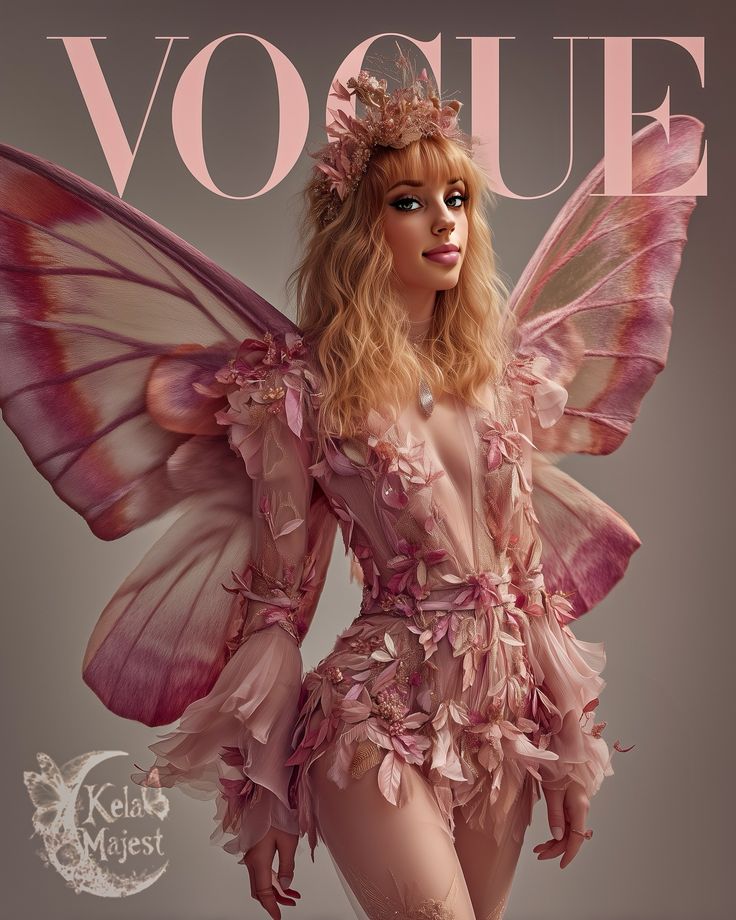
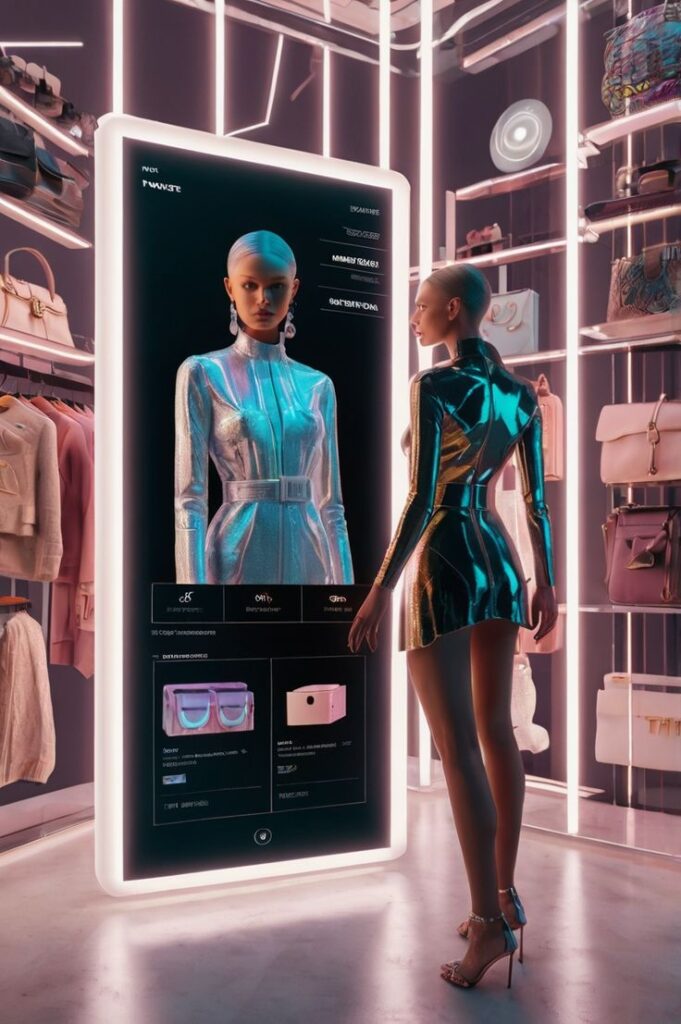
The desire for unique, personalized items has never been stronger. AI makes mass personalization a reality, moving beyond generic sizing to truly bespoke experiences.
- Custom Design based on Data: AI can analyze individual customer data—purchase history, body measurements, style preferences, even social media activity—to suggest or even generate custom designs. Imagine a shirt designed to perfectly flatter your specific body shape and align with your aesthetic, automatically.
- Virtual Try-On Experiences: Augmented Reality (AR) powered by AI allows customers to virtually try on garments using their smartphone cameras or in-store mirrors. This not only enhances the online shopping experience but also reduces return rates, as customers have a clearer idea of how an item will look on them.
- On-Demand Manufacturing: Coupled with AI-driven design, on-demand manufacturing allows brands to produce garments only when an order is placed, greatly reducing inventory waste and enabling hyper-customization without massive upfront investment.
This level of personalization creates a deeper connection between the brand and the consumer, fostering loyalty and satisfaction.
Sustainable Design and Material Innovation
Fashion is notoriously one of the most polluting industries globally. From vast amounts of water used in cultivation and dyeing to textile waste piling up in landfills, the environmental footprint is staggering. AI offers powerful tools to mitigate this impact.
- Optimizing Material Usage: AI algorithms can analyze pattern layouts to minimize fabric waste during cutting, a process known as “zero-waste pattern cutting.” This alone can save significant material and cost.
- Discovering Sustainable Materials: AI can accelerate the research and development of new, eco-friendly materials by analyzing molecular structures and properties to identify viable alternatives to traditional fabrics. It can help predict how new bio-based materials will perform, reducing the need for costly physical prototypes.
- Circular Economy Solutions: AI can track garments throughout their lifecycle, from production to consumption and ultimately, to end-of-life. This data can inform recycling initiatives, identify opportunities for upcycling, and facilitate the resale or repurposing of materials, moving towards a truly circular fashion economy. Brands are leveraging AI to trace raw materials, ensure ethical sourcing, and measure their environmental impact with greater precision.
The ability to create more sustainable products and processes isn’t just good for the planet; it’s increasingly a crucial differentiator for consumers who prioritize ethical consumption.
Beyond the Design Studio: AI’s Impact Across the Fashion Ecosystem
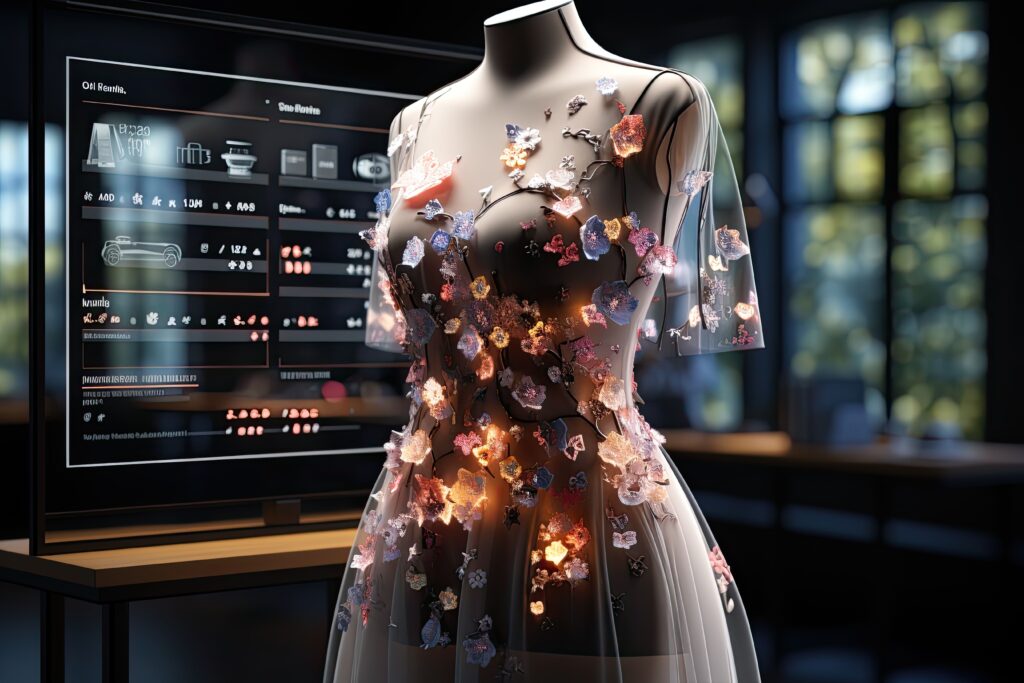
AI’s transformative power isn’t confined to the initial design phase. It’s weaving its way through every layer of the fashion industry, from factory floors to retail storefronts.
Supply Chain Optimization
The fashion supply chain is notoriously complex and often opaque. AI brings unprecedented visibility and efficiency.
- Demand Prediction: Building on its trend forecasting capabilities, AI can predict specific product demand with high accuracy, allowing brands to order the right quantities of raw materials and produce the right number of garments. This minimizes overstocking (and subsequent markdowns or waste) and understocking (missing sales opportunities).
- Inventory Management: AI-powered systems can track inventory levels across multiple warehouses and retail locations, optimizing stock allocation and reducing carrying costs. It can identify slow-moving items and suggest promotional strategies.
- Logistics and Shipping: AI optimizes routing for shipments, predicts potential delays, and streamlines warehouse operations, ensuring products reach their destination faster and more efficiently. This speed is critical in a fast-paced industry where trends can shift rapidly.
By streamlining the supply chain, AI helps brands respond more agilely to market changes, reduce operational costs, and ultimately deliver products to consumers more effectively.
Manufacturing and Production
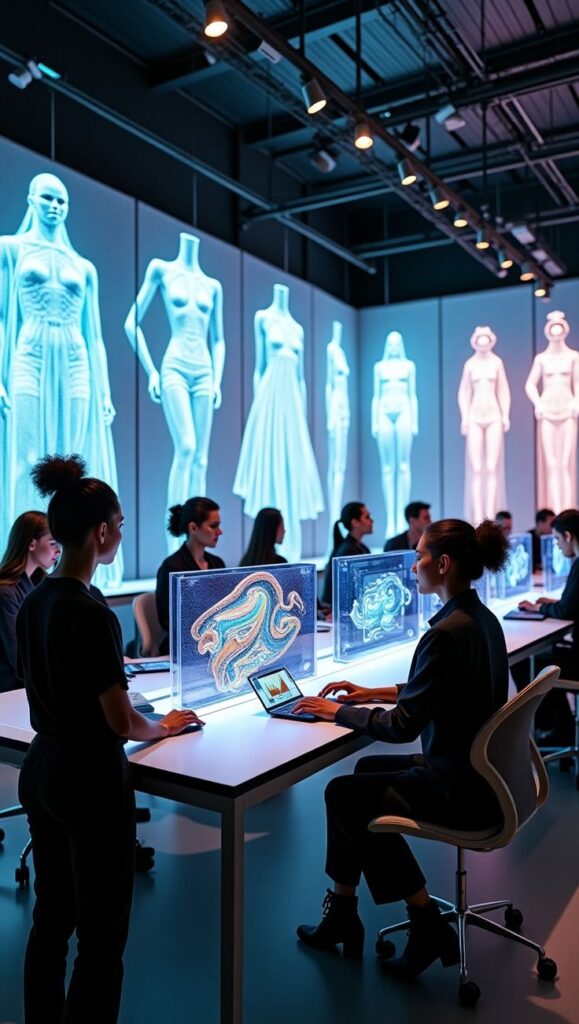

The factory floor is also undergoing a revolution, driven by AI and robotics.
- Automated Pattern Making and Grading: As mentioned, AI can generate precise patterns. It can also automatically “grade” these patterns, adjusting them for different sizes, a task traditionally performed manually and prone to errors.
- Robotics in Garment Assembly: While fully automated garment assembly is still challenging due to the delicate nature of fabrics, AI-powered robots are increasingly assisting with tasks like cutting, sorting, and even basic stitching, improving precision and speed.
- Quality Control: Computer vision AI can inspect finished garments for defects far more consistently and rapidly than the human eye, ensuring higher product quality before items even leave the factory.
These advancements lead to higher efficiency, reduced labor costs, and improved product consistency, allowing manufacturers to meet demand faster and with fewer errors. Moreover, the detailed design generated by AI tools can be directly fed into 3D printing ideas for prototyping or even final product creation in certain accessory categories.
Marketing and Retail Transformation
AI is fundamentally changing how fashion brands connect with consumers and how consumers interact with products in retail environments.
- Hyper-Personalized Marketing: Beyond just suggesting products, AI can analyze individual preferences and behaviors to craft highly personalized marketing messages, advertisements, and product recommendations across various channels, increasing engagement and conversion rates.
- Virtual Stylists and Digital Showrooms: AI-powered chatbots and virtual assistants can act as personal stylists, helping customers discover products based on their stated preferences or even image uploads. Digital showrooms, enhanced by AR/VR, offer immersive experiences where buyers and consumers can explore collections virtually, reducing the need for physical samples and travel.
- Optimizing Store Layouts and Visual Merchandising: AI can analyze foot traffic patterns, customer engagement with displays, and product interactions within physical stores to suggest optimal layouts and merchandising strategies that maximize sales and customer experience.
From targeted social media ads to smart mirrors in changing rooms, AI is making the retail experience more seamless, engaging, and tailored to each individual.
The Human-AI Collaboration: A Symphony of Creativity
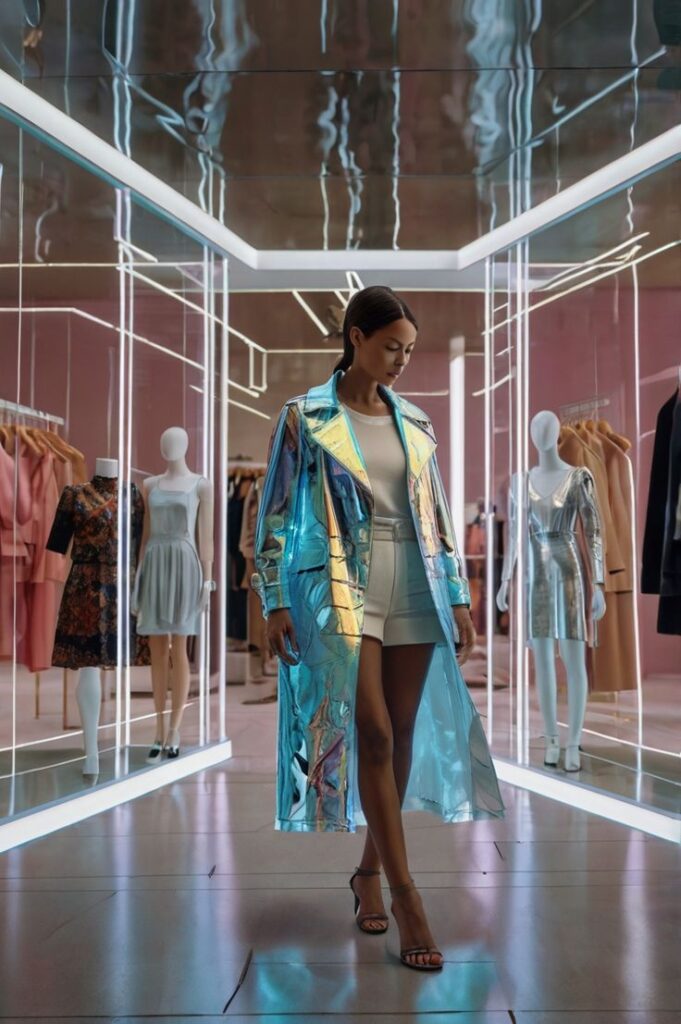
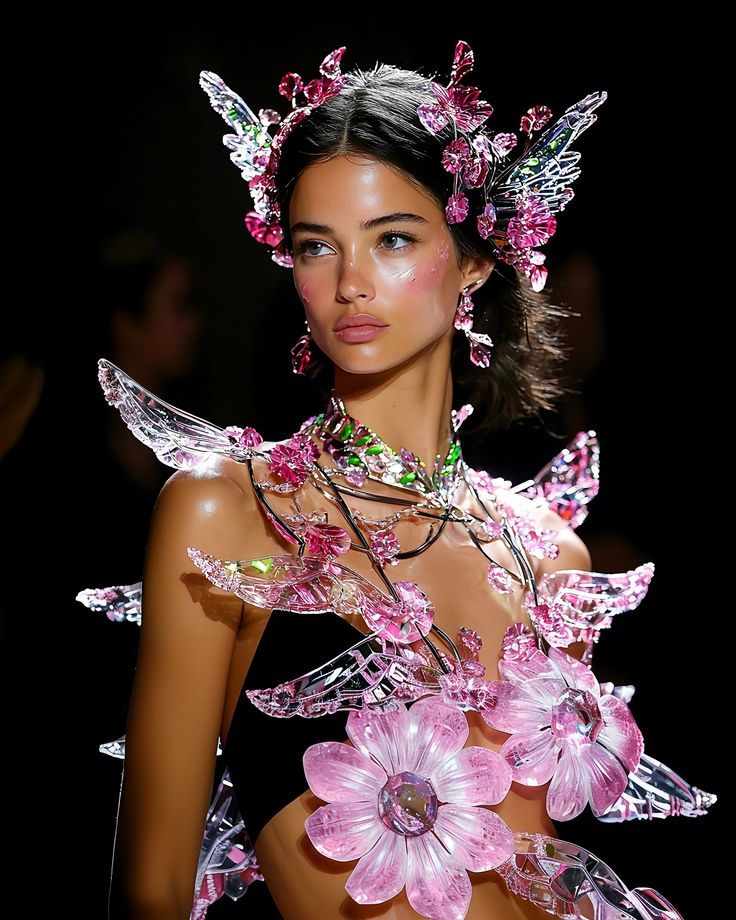

It’s crucial to understand that AI is not an antagonist to human creativity, but a powerful collaborator. The most successful applications of AI in fashion are those where human designers leverage AI as an intelligent tool, rather than simply letting it take the reins.
- AI as a Co-Pilot: Think of AI as an incredibly skilled assistant, capable of handling vast amounts of data, generating countless iterations, and performing complex analyses. This frees designers from mundane or time-consuming tasks, allowing them to dedicate their valuable time and mental energy to higher-level creative thinking, conceptual development, and infusing designs with emotion and storytelling. For instance, while AI might generate thousands of patterns, it’s the human designer who selects the most evocative, culturally resonant, or aesthetically groundbreaking ones, refining them with their unique artistic signature.
- Empowering Focused Creativity: With AI handling the heavy lifting of research and initial concept generation, designers can delve deeper into their creative routines, focusing on the nuances that truly define a collection – the tactile feel of a fabric, the subtle drape of a silhouette, the emotional impact of a color story. This partnership allows for an iterative design process where a designer’s vision can be explored and refined more rapidly and thoroughly than ever before.
- Upskilling Designers for the AI Era: The rise of AI doesn’t diminish the need for skilled designers; it transforms their skillset. Designers are now becoming curators of AI outputs, prompt engineers, and ethical overseers of the technology. Understanding how to interact with AI tools, interpret their results, and guide them towards desired creative outcomes is becoming an essential part of a modern designer’s toolkit. This synergy, where human intuition guides technological capability, is akin to how interior design complements architectural vision, creating a more harmonious and powerful outcome.
Ultimately, the human touch remains indispensable. While AI can create aesthetically pleasing designs, it lacks the lived experience, cultural context, and emotional intelligence to truly tell a story, evoke a feeling, or imbue a garment with soul. The future of fashion lies in this symbiotic relationship, where the boundless generative power of AI meets the irreplaceable depth of human artistry.
Navigating the Challenges and Ethical Considerations

While the potential of AI in fashion is incredibly exciting, it’s vital to acknowledge and address the challenges and ethical considerations that accompany such a powerful technological shift.
Data Privacy and Bias
AI systems are only as good as the data they’re trained on. If that data is biased (e.g., predominantly features certain body types, ethnicities, or socio-economic groups), the AI’s outputs will reflect and perpetuate those biases.
- Ensuring Ethical Data Sourcing: Brands must be diligent in sourcing diverse and representative datasets for training their AI models.
- Addressing Algorithmic Bias: Regular auditing and testing of AI algorithms are necessary to identify and correct any inherent biases that could lead to discriminatory or uninclusive design suggestions.
- Cultural Appropriation: With AI drawing from global fashion trends, there’s a risk that it could generate designs that inadvertently appropriate cultural motifs without proper attribution or understanding. Human oversight is crucial here to ensure respect and cultural sensitivity.
Job Displacement vs. Job Transformation
The fear of job loss is a common concern with any new technology. While some roles, particularly those involving repetitive or data-heavy tasks, may be automated, AI is more likely to transform existing jobs and create entirely new ones.
- The Need for Reskilling: The fashion industry must invest in training and education programs to help its workforce adapt to new AI tools and roles.
- New Roles Emerge: We’ll see an increase in demand for “AI fashion specialists,” “prompt engineers,” “AI ethicists,” and “data scientists for fashion,” who can bridge the gap between design and technology. The key is to view AI as a tool for evolution, not elimination.
Originality and Copyright
When AI generates a design, who owns the copyright? This is a complex and evolving legal question.
- Defining Ownership: Is it the designer who prompts the AI, the AI developer, or a shared ownership? Current legal frameworks are still catching up to the realities of AI-generated content.
- Protecting Human Creativity: Ensuring that human designers’ unique contributions are recognized and protected in an AI-assisted world is paramount. Clear guidelines and policies will be essential to foster continued innovation.
The “Soul” of Fashion
Perhaps the most profound philosophical question is whether AI can ever truly capture the “soul” of fashion—the emotion, the cultural nuance, the pure artistic expression that makes certain garments timeless masterpieces. While AI can simulate aesthetics, it lacks consciousness, empathy, and lived experience. The most compelling fashion often springs from deeply personal experiences, societal critiques, or profound artistic statements that an algorithm cannot replicate. This is where human designers will always reign supreme, using AI as a brush, but wielding the artistic hand.
What’s Next? The Future Horizons of AI in Fashion
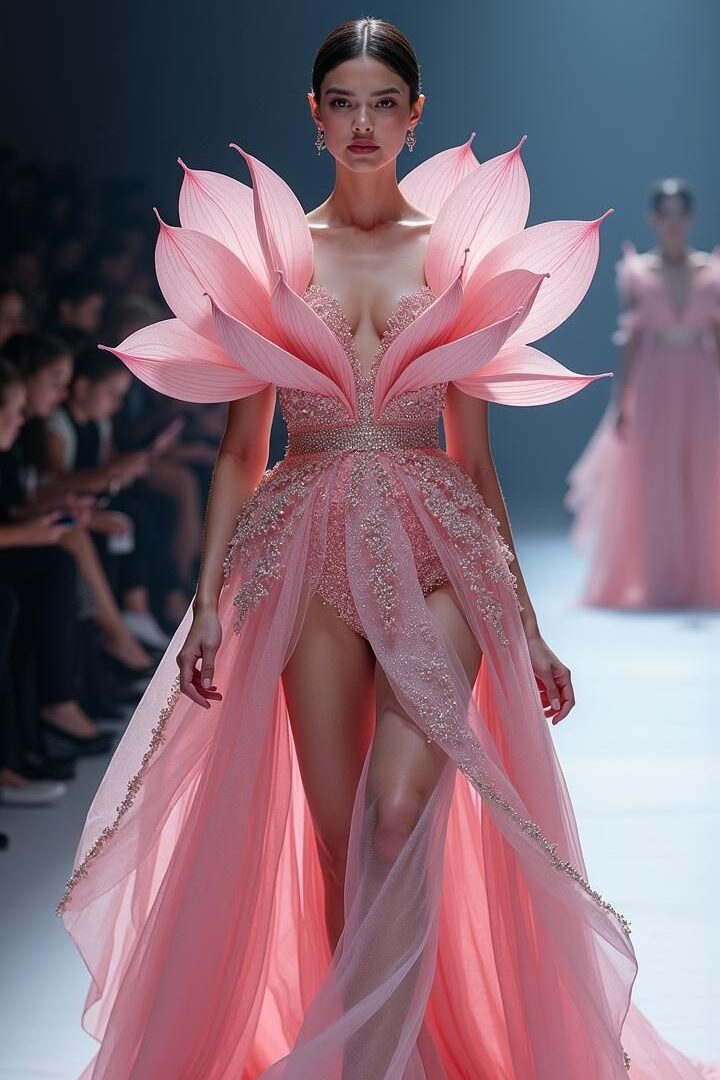
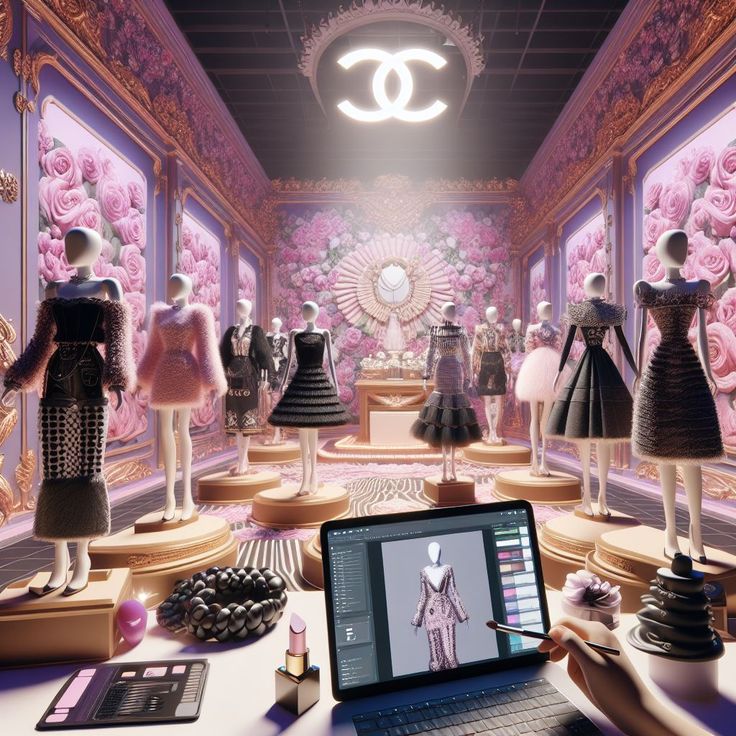
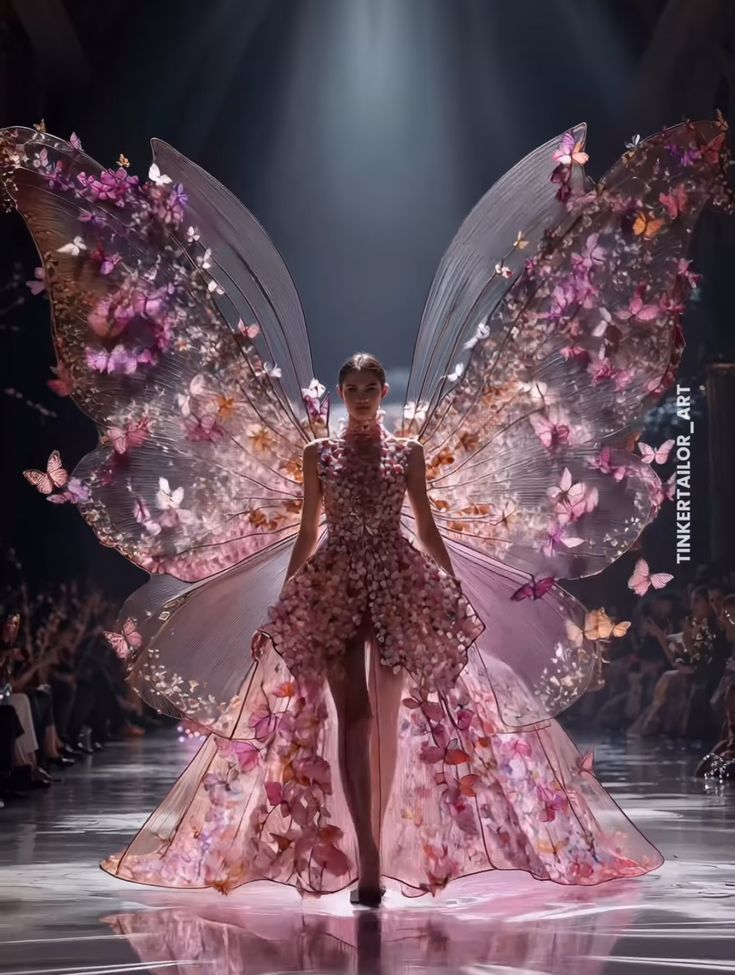
The current applications of AI in fashion are just the tip of the iceberg. The next decade promises even more astonishing advancements that will further blur the lines between the digital and physical, the personal and the collective.
- Hyper-Realistic Digital Fashion and Avatars: We are already seeing incredible advancements in digital fashion, where AI creates ultra-realistic garments for virtual influencers, gaming characters, and metaverse avatars. The next step is a seamless integration where your digital wardrobe mirrors or influences your physical one, or where AI-designed digital garments can be instantly “printed” or manufactured into physical form. Imagine interacting with digital models so lifelike, they’re indistinguishable from reality, or having a digital twin that perfectly reflects your style and human anatomy.
- Truly Adaptive and Responsive Clothing: Imagine garments that literally adapt to your needs and environment. AI-powered fabrics could change color, regulate temperature, or even monitor your health, adjusting in real-time. This could involve materials that become more breathable in heat, waterproof in rain, or change their aesthetic based on your mood or destination.
- Closed-Loop Fashion Systems: AI will be central to achieving a truly circular economy in fashion. From monitoring resource consumption and waste during production to tracking garments throughout their lifespan for efficient recycling, repair, or upcycling, AI will orchestrate a system where fashion items are never truly “waste” but rather resources for new creations.
- Decentralized Design and Production: Blockchain technology, coupled with AI, could enable decentralized fashion ecosystems where designers, manufacturers, and consumers interact more directly. AI could facilitate peer-to-peer design collaborations, transparent supply chains, and on-demand micro-factories, further democratizing the industry.
- Immersive AR/VR Experiences: The integration of AI with augmented and virtual reality will create unparalleled immersive experiences. Think of virtual fashion shows where you can interact with the designs, or AR filters that allow you to try on entire collections from your couch, with AI providing real-time styling advice based on your body shape and preferences.
The future of fashion is a breathtaking landscape where creativity knows no bounds, fueled by the limitless potential of artificial intelligence.
Conclusion
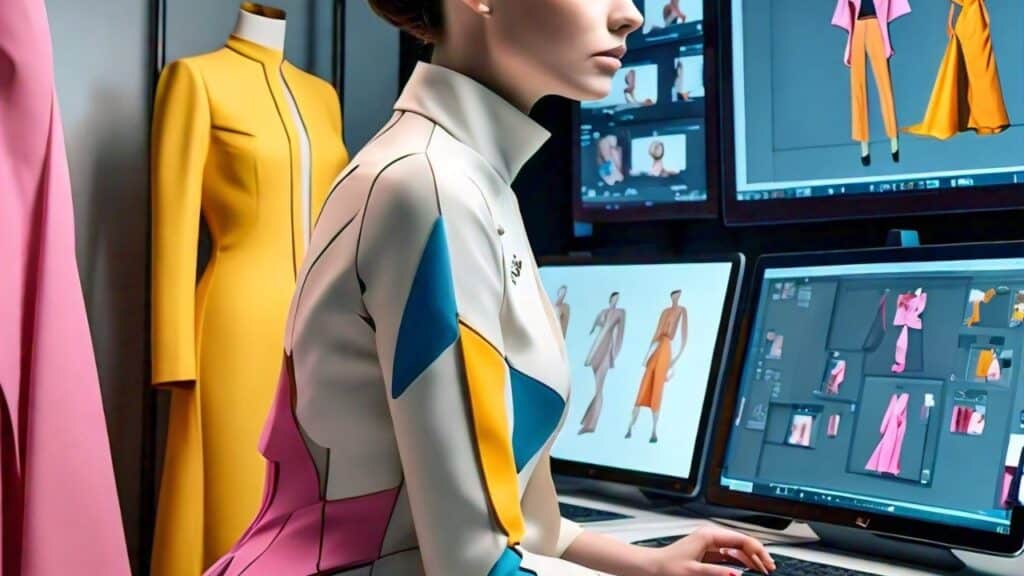
The fusion of AI and fashion design marks an epochal shift, catapulting an age-old industry into an era of unprecedented innovation and possibilities. We’ve witnessed how AI is revolutionizing trend forecasting, empowering designers with accelerated ideation, delivering hyper-personalization, and driving critical sustainability initiatives. Beyond the design studio, AI is optimizing supply chains, enhancing manufacturing, and transforming retail experiences, creating a more efficient, responsive, and exciting fashion ecosystem.
What truly makes this revolution so compelling is not AI’s capacity to replace human ingenuity, but its profound ability to augment it. AI acts as an unparalleled co-pilot, a powerful assistant that takes on the heavy lifting of data analysis and iterative generation, freeing designers to channel their unique artistic vision, emotional intelligence, and storytelling prowess into truly groundbreaking creations. The human touch remains the irreplaceable soul of fashion, now amplified by extraordinary technological power.
Yes, challenges remain – ethical considerations around data bias, the evolving landscape of job roles, and the complexities of intellectual property. Yet, these are surmountable hurdles for an industry that has always thrived on adaptation and audacious vision. The future is vibrant, intelligent, and infinitely creative. Embrace this thrilling journey, explore the incredible potential of these new tools, and become a part of the next chapter in fashion’s exhilarating story. The stage is set for an era where imagination, powered by AI, truly knows no limits!
- 65shares
- Facebook0
- Pinterest65
- Twitter0


